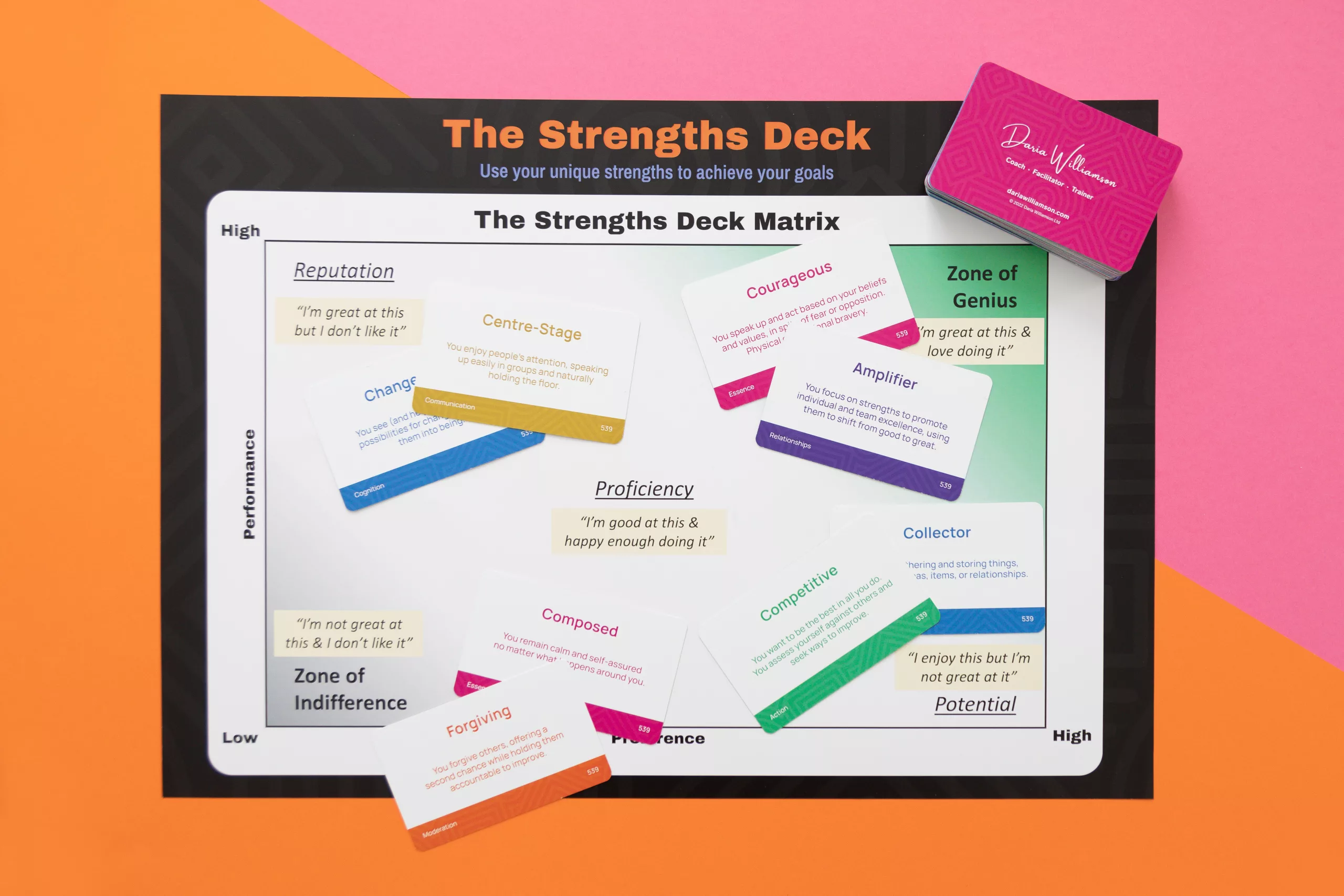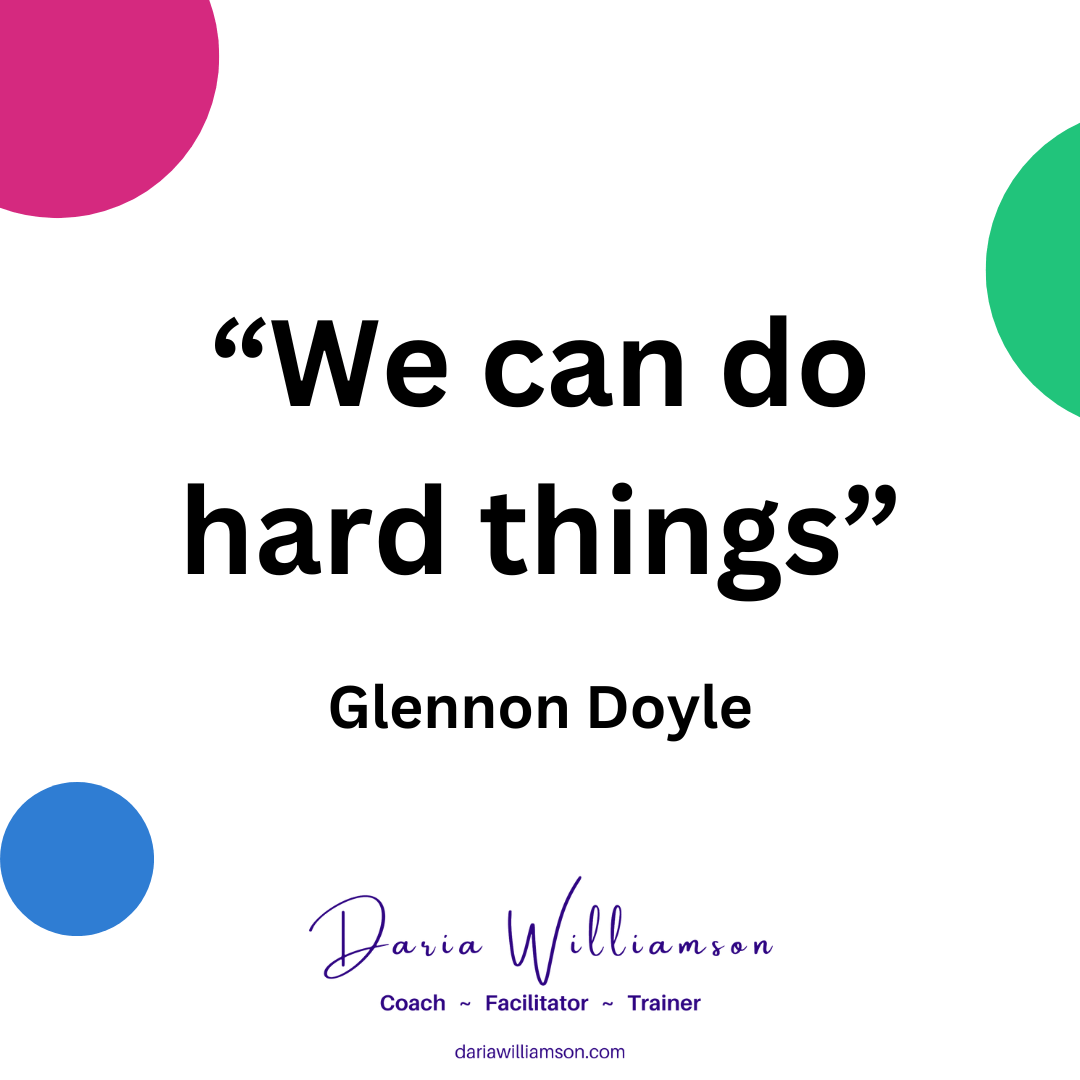Leading and managing change is one of the greatest challenges that leaders face. And it is also one of the greatest opportunities you have to transform the teams and organisations you work in, and the people you work with, for the better.
Choosing to engage in change can be empowering and inspiring. But we don’t always get to choose when we face change or the type of change that we face. No matter the reason that you are facing change, you can lead with empathy, authority, and confidence, by mastering these simple strategies.

Strategies for leading and managing change in a nutshell
- Define the change
- Share the purpose of change
- Understand and communicate the implications of the change
- Link the change to shared values
- Listen to your people
- Demonstrate empathy
- Trust your people
- Experiment and adapt
- Draw on strengths
- Celebrate the wins
The leading and managing change strategies explained
1. Define the change
What is in-scope? What is out-of-scope?
Where does the change start and stop? It’s important for everyone to be clear on the boundaries of the change, so that they can focus their energies on the key areas.
The more tightly-defined the scope of change, the easier it is to run experiments and measure their impact. Consider the difference between “improve the customer journey” and “improve first-call resolution rates for billing enquiries”. The first scope is so broad that anything and everything should be considered. The second scope is much more defined – if an element doesn’t contribute to or affect first-call resolution for billing enquiries, then it is out-of-scope.
That’s not to say that there aren’t many other areas that need improvement. But running a series of tightly-scoped projects is much more efficient, productive, and motivating, than trying to fix everything at the same time.
2. Share the purpose of the change
Why this change? Why now?
It’s hard to get on board with a change when you don’t understand why it is happening. So when you are leading and managing change, be painfully clear with your people about the reasons for making the change, and the reasons why this particular change has been selected.
Give them the bigger picture – share how the change fits with the organisation’s vision and strategy. Help them understand how this change will help the organisation achieve its goals. Create a conversation that allows them to ask questions and get clear on how this change will affect them and their ability to do their best work. You might even learn some new information that will help you tailor the change so that it is more effective!
3. Understand and communicate the implications of the change
What stays the same? What will change? What will we lose? What will we gain?
A common mistake when leading and managing change is to focus only on what is changing for the better. We accidentally ignore the possible downsides of the change, and we don’t acknowledge that there will be some losses along the way. And when we don’t communicate the extent to which things will stay the same, we lose the chance to address fears related to the scale of the change.
When we openly acknowledge downsides, losses, and how much isn’t changing, we make it easier for people to get on board with the change, because they have a clear picture of the change and its likely outcomes.
Jason Clarke’s ‘Four Doors of Change’ is a fantastic tool to help uncover what is and isn’t changing, and to identify potential consequences of the change. I’ve previously published an article about how to use this amazing tool, which includes access to a free ‘4 Doors of Change’ template for personal or business use.
4. Link the change to shared values
Use values as guideposts and decision criteria
If the change you’re contemplating doesn’t align with your personal or organisational values, it’s worth asking whether it is the right change to make.
But once you’re on board, then a key to leading and managing change successfully is to use your values as guideposts and decision criteria during the change process. This works equally well for personal or organisational change.
The first step is getting clear on your (personal or organisational) values. I plan to write more about this in the future, but in the meantime, check out the Values Elicitation Exercises in the Resources section for some guidance. It’s a good idea to rank your values in order of importance, as sometimes you’re faced with a situation where you have to choose between different values.
Then, use your values to check on the direction of the change, and to make decisions. Is the change bringing you more into alignment with your values, or less? What can you do to align the change more closely with your values? When faced with choosing between options, which option is the best fit with your values?
5. Listen to your people
What are they saying? What aren't they saying?
Communication isn’t about just what is said. What is unsaid can often speak volumes.
Engage your people in conversation. Encourage feedback and questions. Use their perspective to improve and adjust the change programme to increase the likelihood of successful change.
And take time to reflect on what your people are not talking about. Then use those reflections to create more conversations. Ask questions to elicit feedback, opinions and ideas.
To do this well, you need to make it safe to have contrary opinions, to disagree, and to think differently. A key way to do this is by demonstrating empathy.
6. Demonstrate empathy
Listen, acknowledge, respond.
Empathy involves recognising and acknowledging how another person is feeling. You put yourself in their shoes and imagine how they might feel in the situation. It doesn’t mean you have to agree 100% with their perspective, but you do acknowledge that their feelings are legitimate.
Empathy starts with full-sense listening. Not just the words they are saying, but their tone of voice, the way they are holding and moving their body, their facial expression, and any other cues you pick up.
Then, reflect those observations back to the person – both what they’ve said and how it seems they are feeling. And make space for the possibility you have misinterpreted the signals. For example: “I hear you saying that you want to go ahead, but you seem hesitant – have I got that right?” gives the other person a chance to confirm whether you received their message (go/no go) and also how they are feeling about it, without imposing your view/interpretation on them. This opens the space for further conversation, and building a more trusting and open culture (which is a key foundation for psychological safety).
7. Trust your people
Seek their input. Encourage accountability. Delegate responsibility for implementation.
Old school leadership and management thinking is that you have to have all the answers. But taking that approach means that you miss out on the perspectives, insight, wisdom, experience, and creativity of your people.
Your main role in leading and managing change is to supply resources and remove roadblocks. Your people see things in their daily work that you’ll miss. They know what gets in the way, and what will make their lives easier. So trust them and their input – almost everyone rises to the occasion when they feel like they are trusted to do a great job.
Ask your people for their ideas and suggestions. Seek their feedback on proposals, and ask them to tell you how they would improve them. Encourage them to step up with their own ideas and be accountable for getting results. Delegate responsibility for implementation to them. Find out what they need to get the job done right and to make change happen, then do everything within your power to get those resources to them. And get the roadblocks out of their way.
8. Experiment and adapt
Experiment with "little bets". Act on the results. Adapt your approach.
You don’t have to solve the problem in one fell swoop. A great deal of leading and managing change involves lots of small improvements that build on one another.
Make “little bet” experiments – change one small element and measure the impact. Did it work? Keep doing it and pick a new change? If it didn’t, stop doing it, and pick a new change.
How to measure the impact:
- What are the direct results of the change in your area?
- Were the changes positive or negative?
- Do the positives outweigh the negatives by a big enough margin to stick with the change?
- Look up- and down-stream of each change you make – what changed as a result of your change?
- Were the up- and down-stream outcomes positive or negative?
- Do the up- and down-stream positives outweigh the negatives by a big enough margin to stick with the change?
- Invite stakeholders to give feedback and make suggestions.
This measurement approach helps you hunt out the unintended consequences of your change. It’s no good to optimise your part of the process if it makes it harder for everyone else to do their bit!
Adapt your approach based on the feedback. You might turn the experiment into “how we do things around here”, adjust the experiment and try again, or drop it and try a new experiment. The main thing is to remain flexible and adapt your approach based on evidence.
9. Draw on strengths
Your strengths. Your people's strengths. Collaborate and combine.
When leading and managing change, it can be easy to focus only on the problems you’re trying to solve. But this deficit-based approach drains motivation and reduces creativity and collaboration.
Instead, flip your perspective to look at how you can draw on strengths to make change. Each person has a constellation of strengths – get familiar with your own, and those of your people. Then look for ways to combine strengths to increase your chances of success. I’ve written a number of articles about strengths – head to the Working with Strengths sub-section of the Resources section for more information, or check out The Strengths Deck, a new and innovative way to learn about your strengths.
10. Celebrate your wins
Big and small. Progress over perfection.
If you wait until you’ve completed the change before celebrating, be prepared to expend a lot of effort trying to keep yourself and your people motivated. The most effective approach to leading and managing change is to break the change down into smaller elements, and celebrate each accomplishment along the way.
Of course you should also celebrate in a big way when you have completed the change! But small and meaningful celebrations as each phase is completed will allow you and your people to acknowledge the progress you’ve made, reflect on what you’ve learned and achieved, and refresh yourselves to be ready for the next phase.
A key mindset shift that goes alongside celebrating all wins, big and small, is to to prioritise progress over perfection. If we wait until something is perfect before launching, we reduce its potential impact, and lose the opportunity for continuous improvement. There are some notable exceptions – where personal safety or matters of integrity and governance are concerned, then perfection is an admirable goal. But for all else, be prepared to launch before you are 100% ready, so that you can gather your learnings as you go, and progress towards perfection more quickly.
Resources
- Define the Change: The First Step in Your Change Management Strategy – IMA Worldwide
- Overcoming hurdles to creating a shared organizational change purpose – Change First
- Why having purpose behind change is fundamental to success – Thinking Focus
- The importance of empathy in organizational change – Memory
- 6 Tactics to Help You Aim For Progress—Not Perfection – The Shine App
- Focus on progress, not perfection – Mayo Clinic
Values Elicitation Exercises
- Values Triangle Exercise – Thousand Insights
- Eliciting Values in 3 Simple Steps – Mandala Mind
Working with Strengths
Here are a sample of articles I’ve written about working with your strengths. Head over to my Blog page to find more articles and resources, or check out The Strengths Deck – a new and innovative way to get to grips with your strengths.





